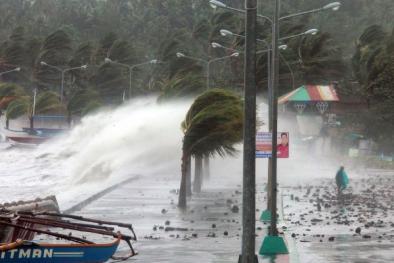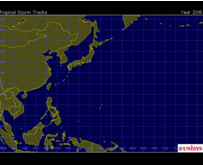Science Source
Climate change effects on the worst-case storm surge: a case study of Typhoon Haiyan
- Investigates the effects of climate change on the worst case scenario of a storm surge induced by a super typhoon in the present climate through the case study of Typhoon Haiyan
- Presents the results of our investigation on super-typhoon Haiyan by using a super high resolution (1 km grid) regional model that explicitly handles cloud microphysical processes
- Adopts the operational weekly ensemble experiments (60 km grid) of the Japan Meteorological Agency as a the parent model
- Compares experiments using sea surface temperatures and atmospheric environmental parameters from before the beginning of anthropogenic climate change (150 years ago) with those using observed values throughout the typhoon
- Represents the typhoon's intensity and evaluates the influences of climate change on worst case storm surges in the Gulf of Leyte due to a typhoon with high robustness
- Finds that in 15 of 16 ensemble experiments, the intensity of the simulated worst case storm in the actual conditions was stronger than that in a hypothetical natural condition without historical anthropogenic forcing during the past 150 years
- Translates the intensity of the typhoon to a disaster metric by simulating the storm surge height by using a shallow-water long-wave model
- The result indicates that the worst case scenario of a storm surge in the Gulf of Leyte may be worse by 20%, though changes in frequency of such events are not accounted for here
Related Content
Science Source
| Nature
Coastal flooding by tropical cyclones and sea-level rise
Jonathan D. Woodruff, Jennifer L. Irish, Suzana J. Camargo
Headline

Mar 24, 2016 | TIME
The Philippines Is the Most Storm-Exposed Country on Earth
Headline

Mar 24, 2016 | Weather Underground
Haiyan's Storm Surge: A Detailed Look
Real Time Data

Mar 16, 2016 | Unisys
West Pacific Tropical Storm Tracking


